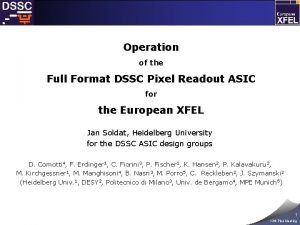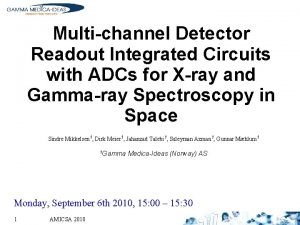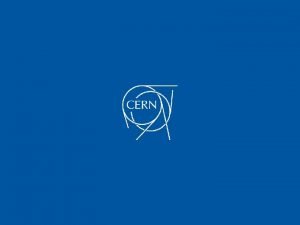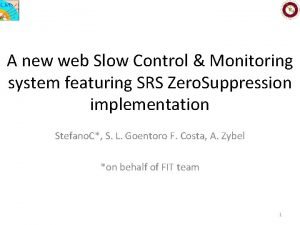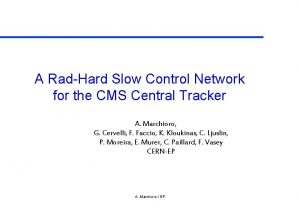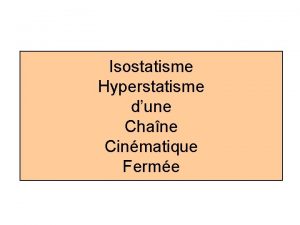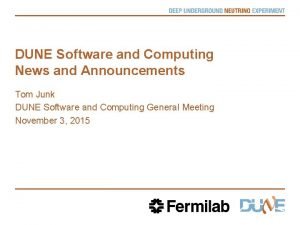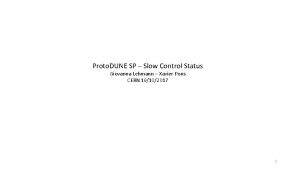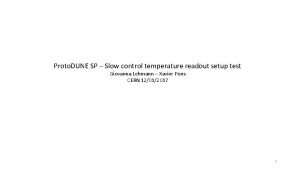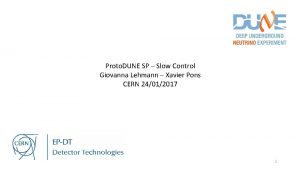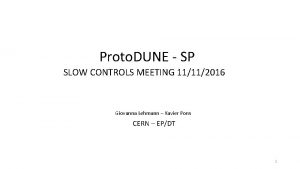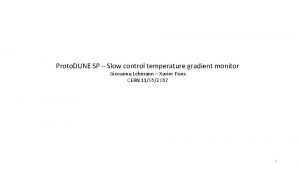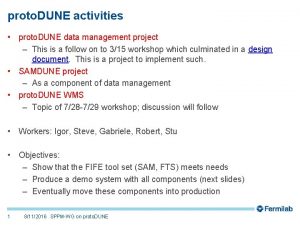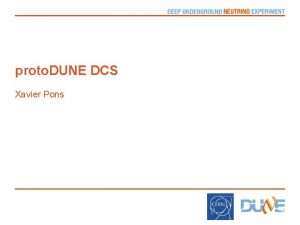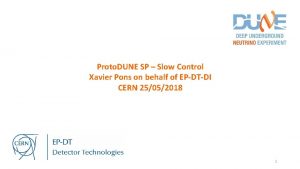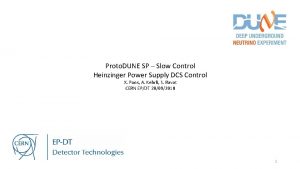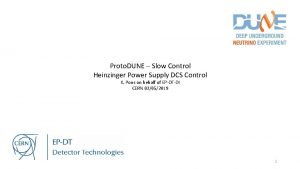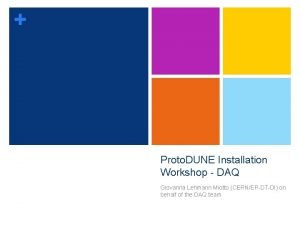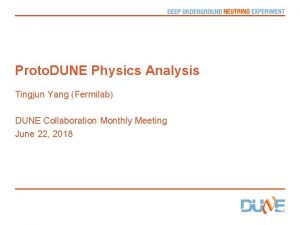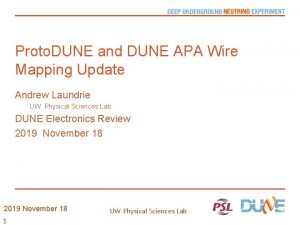Proto DUNE SP Slow control temperature readout Giovanna















- Slides: 15

Proto. DUNE SP – Slow control temperature readout Giovanna Lehmann – Xavier Pons CERN 21/11/2016 1

Requirements - To measure one (maybe 2) temperature gradient monitor. - It means to measure 70 (maybe 140) temperature points per gradient monitor 2

Requirements - To measure one (maybe 2) temperature gradient monitor. - It means to measure 70 (maybe 140) temperature points per gradient monitor - Hawai University plans to use PT-102 / PT-103 high platinum RTD temperature sensors from Lakeshore company. 3

- Temperature readout: Lakeshore temperature monitor type 218 - One Lakeshore temperature monitor 2018 supports 8 RTD temperature sensor readout. - Integration to SC possible via RS-232 - For one temperature gradient (70 temperature sensors) 9 Lakeshore temperature monitor are required. (18 for 2 temperature gradient monitor) - 9 (18) RS-232 ports required to integrate them in the SC. - In addition to the temperature gradient monitor, in the overall detector there are many other temperature sensors, either PT 1000 to be integrated into the SC. 4

RTD PT 100 and PT 1000 temperature sensors readout system directly by SC. Lakeshore sensor are conformance to IEC 751 / DIN 43760 (α = 0. 00385) 5

Lakeshore 218 temperature monitor is conformance to IEC 751 / DIN 43760 (α = 0. 00385) Lakeshore accuracy at 77 K ~ ± 152 m. K 6

IEC 751 / DIN 43760 (α = 0. 00385) 7

How to integrate into SC? Connecting directly to SC by c. RIO module NI 9216 (PT 100) and NI 9226 (PT 1000) 8 channels per module, 8 modules per c. RIO maximum. http: //www. ni. com/pdf/manuals/376921 c_02. pdf ± 150 m. K accuracy at 25°C and, enough? No isolation channel to channel // 250 V channel to ground 8

WA 105 – used the module c. RIO - NI 9219 http: //www. ni. com/pdf/manuals/374473 a_02. pdf Problem only 4 channels per module and expensive ~ 1000$/module Accuracy ± 100 m. K at 25°C, and ± 500 m. K in the range -40°C to 70 °C The cost of readout for one gradient temperature monitor with 70 temperature points: 18000 $ in c. RIO modules + 10200 $ in c. RIO FPGA 9

CERN proposes to create the own PT 100 and PT 1000 readout electronics for better accuracy and cost. I The proposal consist in creating a individual precise current source for each temperature sensor. Based in the Texas Instruments technical note: http: //www. ti. com/lit/an/sbva 001. pdf http: //www. ti. com/lit/an/sboa 046. pdf This fixed and precise current source is used to excite the RTD PT 100 and PT 1000 The voltage sense of the sensor VM can be read by 16 channel NI 9205 module The readout accuracy is ± 174 µV. At 73 K PT 100 R =18. 52 Ω with 1 m. A current source the voltage VM=18. 52 m. V If include accuracy ± 174 µV → error range between 18. 694 m. V and 18. 346 mv → 18. 694 Ω and 18. 346 Ω → ± 0. 4 K 10

Using the 24 bits NI 9238 c. RIO module considering the ± 0. 07% error At 73 K PT 100 R =18. 52 Ω with 1 m. A current source the voltage VM=18. 52 m. V If include accuracy ± 0. 07% → error range between 18. 5329 m. V and 18. 50703 mv → 18. 5329 Ω and 18. 507 Ω → ± 0. 03 K 11

Conclusion: The best method for reading the temperature gradient monitor in accurate way, would be a system which will multiplex all temperature sensors to calibrated module National Instruments NI 9238 with 0. 07% error 12

13

14

15
 Slow in slow out animation
Slow in slow out animation Readout device
Readout device Full pixel readout
Full pixel readout Readout integrated circuit
Readout integrated circuit Readout units
Readout units Slow control application
Slow control application Slow control application
Slow control application Desert pavement definition
Desert pavement definition How are sand dunes formed
How are sand dunes formed Ecological succession case study
Ecological succession case study Dune ddl
Dune ddl Dunesoftware
Dunesoftware In the desert, ephemeral streams _____.
In the desert, ephemeral streams _____. Dune sp
Dune sp Plan détaillé exemple
Plan détaillé exemple Dune prison planet
Dune prison planet


